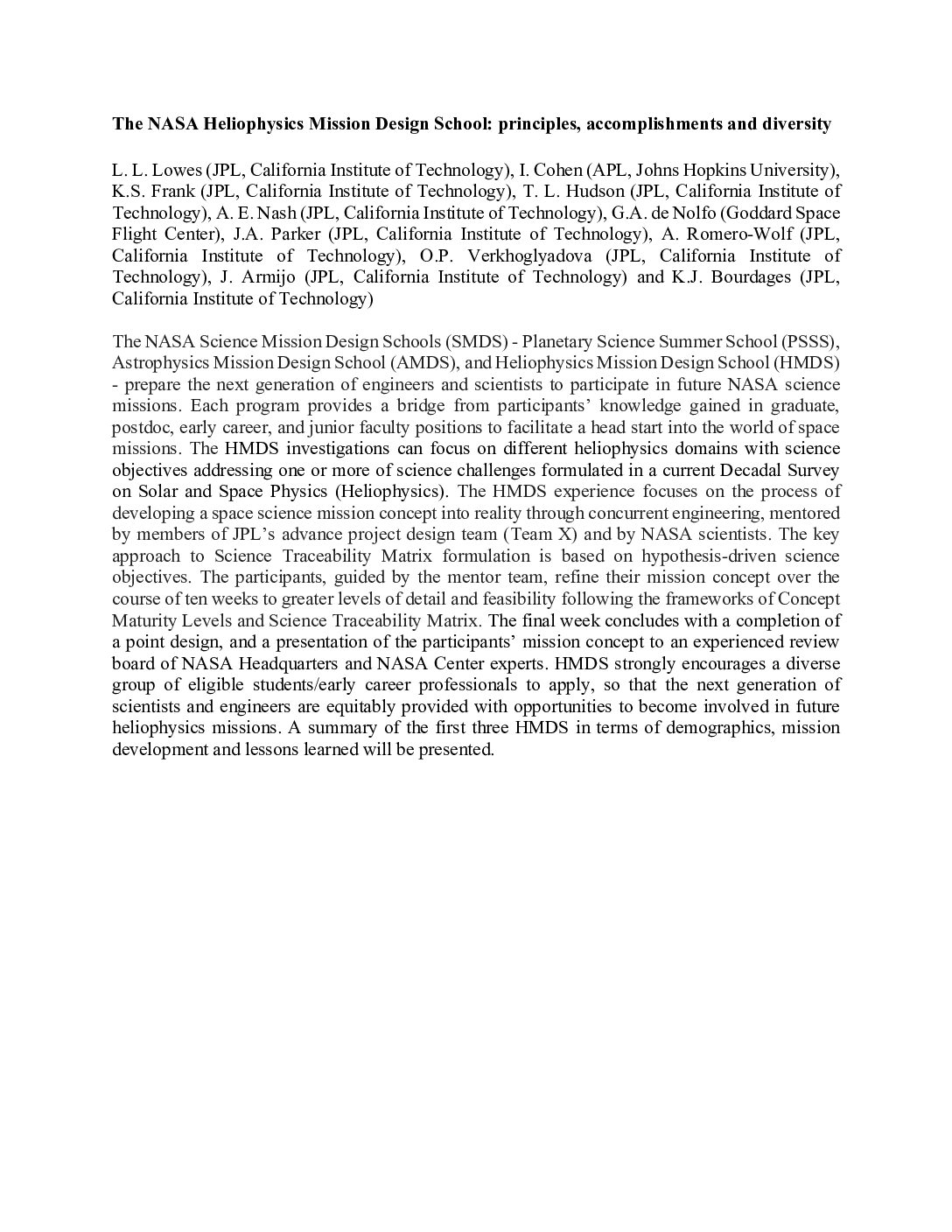Authors: O. Verkhoglyadova (JPL, California Institute of Technology), L. L. Lowes (JPL, California Institute of Technology), I. Cohen (APL, Johns Hopkins University), K.S. Frank (JPL, California Institute of Technology), T. L. Hudson (JPL, California Institute of Technology), A. E. Nash (JPL, California Institute of Technology), G.A. de Nolfo (Goddard Space Flight Center), J.A. Parker (JPL, California Institute of Technology), A. Romero-Wolf (JPL, California Institute of Technology), O.P. Verkhoglyadova (JPL, California Institute of Technology), J. Armijo (JPL, California Institute of Technology) and K.J. Bourdages (JPL, California Institute of Technology)
The NASA Science Mission Design Schools (SMDS) – Planetary Science Summer School (PSSS), Astrophysics Mission Design School (AMDS), and Heliophysics Mission Design School (HMDS) – prepare the next generation of engineers and scientists to participate in future NASA science missions. Each program provides a bridge from participants’ knowledge gained in graduate, postdoc, early career, and junior faculty positions to facilitate a head start into the world of space missions. The HMDS investigations can focus on different heliophysics domains with science objectives addressing one or more of science challenges formulated in a current Decadal Survey on Solar and Space Physics (Heliophysics). The HMDS experience focuses on the process of developing a space science mission concept into reality through concurrent engineering, mentored by members of JPL’s advance project design team (Team X) and by NASA scientists. The key approach to Science Traceability Matrix formulation is based on hypothesis-driven science objectives. The participants, guided by the mentor team, refine their mission concept over the course of ten weeks to greater levels of detail and feasibility following the frameworks of Concept Maturity Levels and Science Traceability Matrix. The final week concludes with a completion of a point design, and a presentation of the participants’ mission concept to an experienced review board of NASA Headquarters and NASA Center experts. HMDS strongly encourages a diverse group of eligible students/early career professionals to apply, so that the next generation of scientists and engineers are equitably provided with opportunities to become involved in future heliophysics missions. A summary of the first three HMDS in terms of demographics, mission development and lessons learned will be presented.


